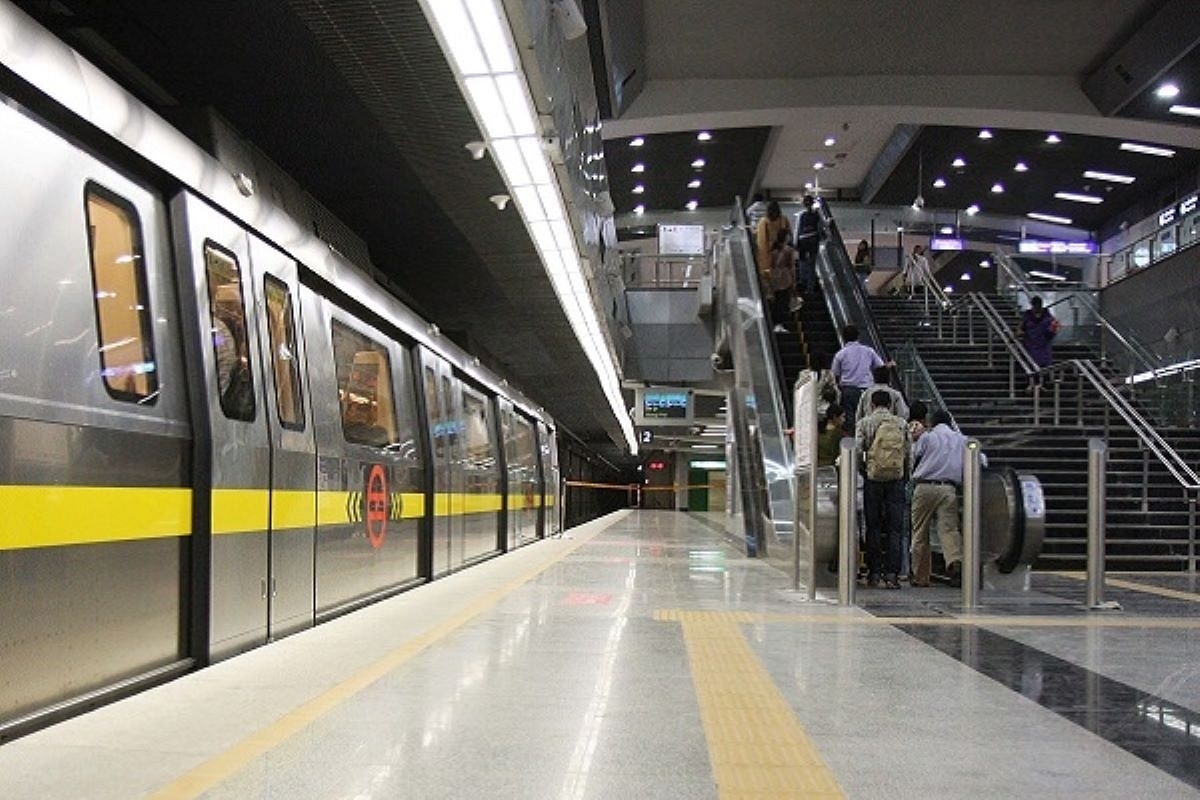Infrastructure
Delhi Metro Phase IV: Nod For Two New Corridors, Will Expand Network To 480 Km With Eight New Interchange Stations

The Delhi Metro.
In a major announcement, the Union Cabinet on Wednesday approved two new metro lines for the national capital as part of Phase IV expansion of the Delhi Metro.
The two new corridors — one from Lajpat Nagar to Saket G-Block in the south and the other from Inderlok in the northwest to Indraprastha in central Delhi — will further expand the city's already expansive metro grid, linking previously unconnected stations.
The corridors, spanning 20.7 km with 18 stations, will benefit an additional 2.5 lakh daily commuters. With a projected cost of Rs 8,399 crore, funding will come from the Union and Delhi governments, along with international agencies.
The Lajpat Nagar to Saket G-Block line, stretching 8.4 km, will put many south Delhi neighbourhoods, including Andrews Ganj, Greater Kailash, and Saket, on the metro map, enhancing last-mile transit.
This elevated line will feature eight stations: Lajpat Nagar, Andrews Ganj, Greater Kailash-1, Chirag Delhi, Pushpa Bhawan, Saket District Centre, Pushp Vihar and Saket G Block.
While the 12.4 km Inderlok-Indraprastha corridor will be an extension of the Green Line, which links Bahadurgarh and Inderlok/Kirti Nagar, opening up new areas in Central and East Delhi.
With 10 stations — Inderlok, Daya Basti, Sarai Rohilla, Ajmal Khan Park, Nabi Karim, New Delhi, LNJP Hospital, Delhi Gate, Delhi Sachivalaya, and Indraprastha — the Inderlok station will be elevated, while the other nine stations on the new corridor will be underground.
The Delhi Metro Rail Corporation Limited (DMRC) has commenced pre-bid activities and is currently preparing tender documents for the two recently approved corridors.
Under Phase-IV, the Delhi Metro is adding 65.20 km of new lines across three priority corridors in the national capital, with 45 metro stations. These new corridors are expected to be completed by March 2026 in stages.
Included in this expansion are the 29-km-long Janakpuri West to RK Ashram Marg and the 12.3-km Majlis Park-Maujpur corridor, both of which are extensions of the Magenta Line and Pink Line respectively.
Additionally, the construction of the 23.62 km Tughalakabad-Aerocity corridor, known as the 'Golden Line', is underway. This corridor will link the operational Violet Line and Airport Line from their respective ends.
Presently, the DMRC operates a network of 392.44 km consisting of 288 stations across 12 corridors, including the Noida-Greater Noida Metro Corridor and the Rapid Metro in Gurugram. The Delhi Metro facilitates over six million passenger journeys each day, making it one of the largest mass transit systems globally.
Upon the completion of Phase-IV, the capital's metro network will expand to approximately 480 km, further solidifying its prominence.
The Union Cabinet's approval of two new Delhi Metro corridors holds significant implications, primarily in the expansion of interchange stations to 48, facilitating shorter transfers between separate metro lines.
At present, Delhi Metro has 29 existing interchange stations, which came up in phases I, II and III. However, an additional 11 interchange stations are being constructed under Phase IV’s three priority corridors.
Adding more interchange stations will make commuting smoother, spreading out passenger traffic evenly. This is also beneficial because it encourages more people to use thme Metro for shorter trips, which helps ease traffic congestion on roads.
Furthermore, the approval will increase the number of triple interchange stations — those that cater to three metro lines — from one to four.
Presently, only Kashmere Gate serves as a triple interchange station (Red, Yellow, and Violet lines), with the Azadpur station (Yellow, Pink, and Magenta) currently under construction. However, with the cabinet's approval, Lajpat Nagar and New Delhi stations will also join the ranks of triple interchange stations.
Support Swarajya's 50 Ground Reports Project & Sponsor A Story
Every general election Swarajya does a 50 ground reports project.
Aimed only at serious readers and those who appreciate the nuances of political undercurrents, the project provides a sense of India's electoral landscape. As you know, these reports are produced after considerable investment of travel, time and effort on the ground.
This time too we've kicked off the project in style and have covered over 30 constituencies already. If you're someone who appreciates such work and have enjoyed our coverage please consider sponsoring a ground report for just Rs 2999 to Rs 19,999 - it goes a long way in helping us produce more quality reportage.
You can also back this project by becoming a subscriber for as little as Rs 999 - so do click on this links and choose a plan that suits you and back us.
Click below to contribute.
Latest